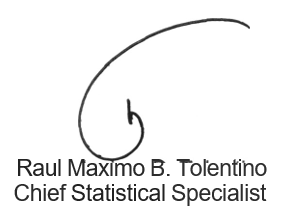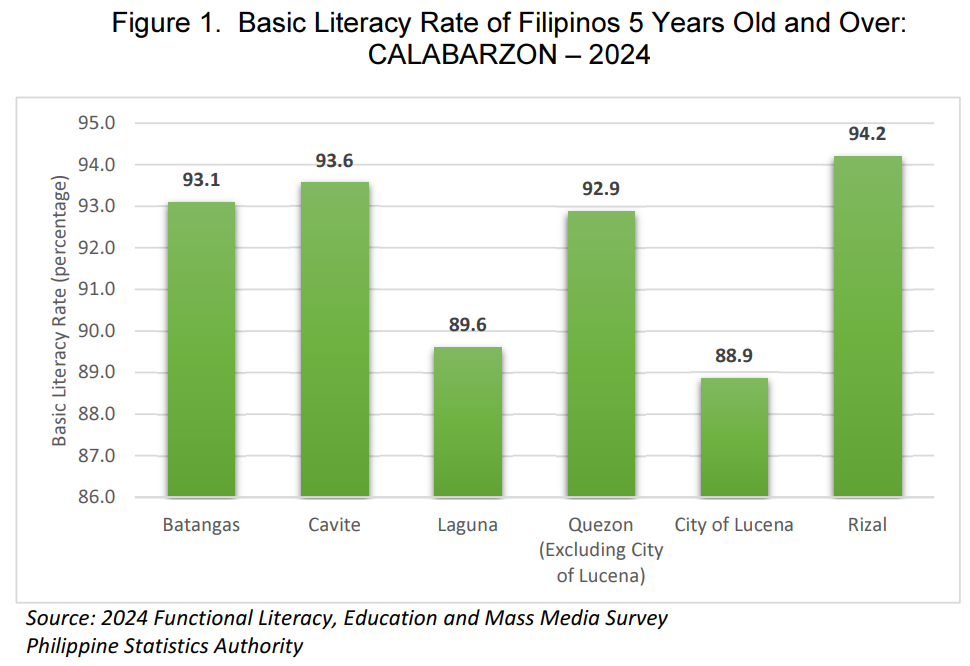
1. Batangas recorded the third- highest in basic literacy rate in CALABARZON
The 2024 FLEMMS results revealed that 93.1 percent, or approximately 9 out of 10 Filipinos aged five (5) years and over in Batangas had basic literacy. This translates to about 2,854 (in thousand) individuals aged 5 years and over who can read, write, and compute, out of an estimated 3,065 thousand individuals in the same age group.
Rizal recorded the highest basic literacy rate at 94.2 percent, followed by Cavite at 93.6 percent, while Lucena City registered the lowest at 88.9 percent (Figure 1).
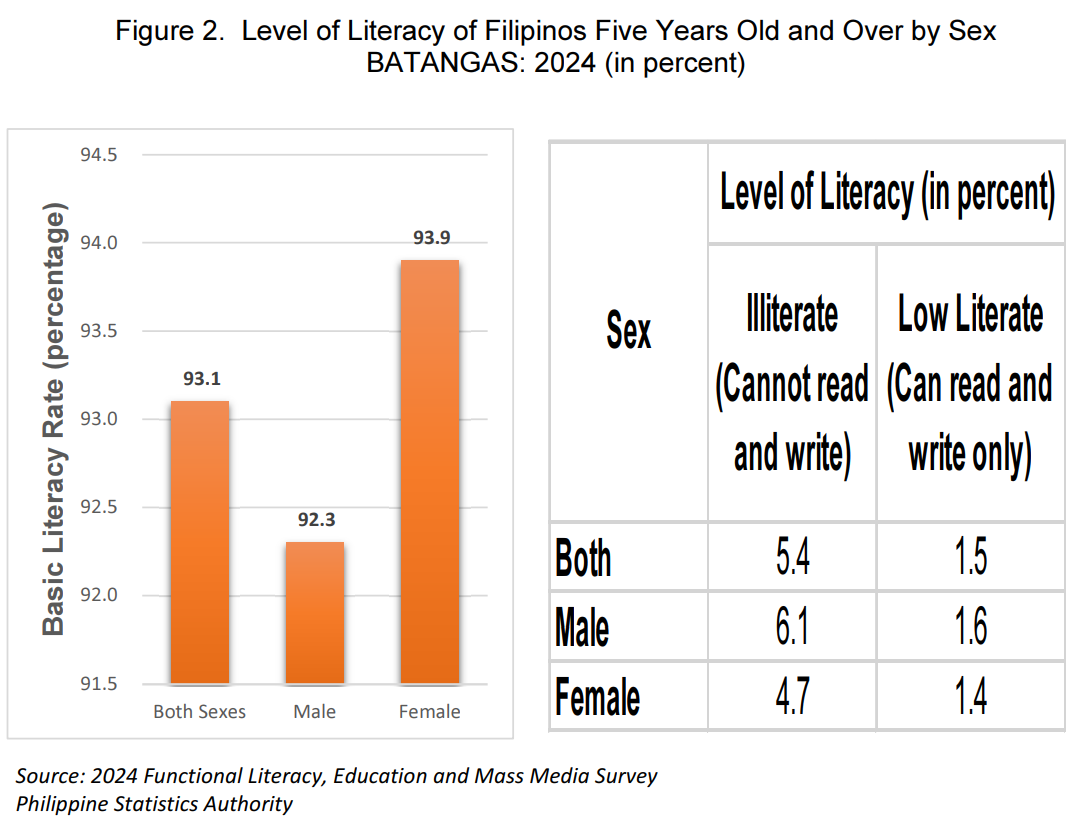
In terms of sex, the basic literacy rate was higher among females, at 93.9 percent, compared to 92.3 percent among males. Conversely, males recorded higher proportions of illiteracy and low literacy, at 6.1 percent and 1.6 percent, respectively. Females, on the other hand, had lower rates, with 4.7 percent being illiterate and 1.4 percent classified as low literate. These figures indicate that females in Batangas are generally more proficient in reading, writing with understanding, and performing basic computations.
2. Proportion of Individuals Who Cannot Read and Write, or Are Illiterate, Is Highest Among Males Aged 5 Years and Over
Among individuals aged 5 years and over, 5.4 percent—or about 5 out of every 100—are unable to read and write and are considered illiterate. The data reveals a gender gap in illiteracy, with a higher proportion of males (6.1%) being illiterate compared to females (4.7%).
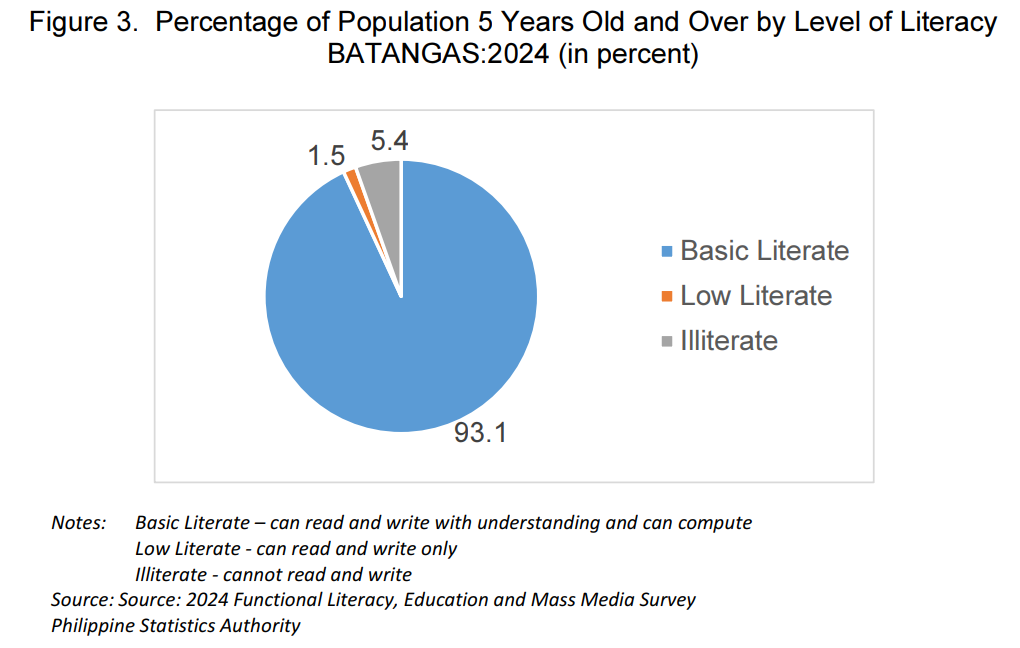
3. Batangas recorded the second- highest in functionality literacy rate
The functional literacy rate of Batangas in 2024 was recorded at 81.3 percent or about 8 out of 10 individuals aged 10 to 64 years were functionally literate. This translates to around 2,057 (in thousand) individuals aged 10 to 64 years who can read, write, compute, and comprehend out of the estimated 2,532 thousand individuals in the same age group.
The Rizal recorded the highest functional literacy rate at 82.1 percent, while Quezon (Excluding City of Lucena) had the lowest at 71.7 percent. (Figure 4)
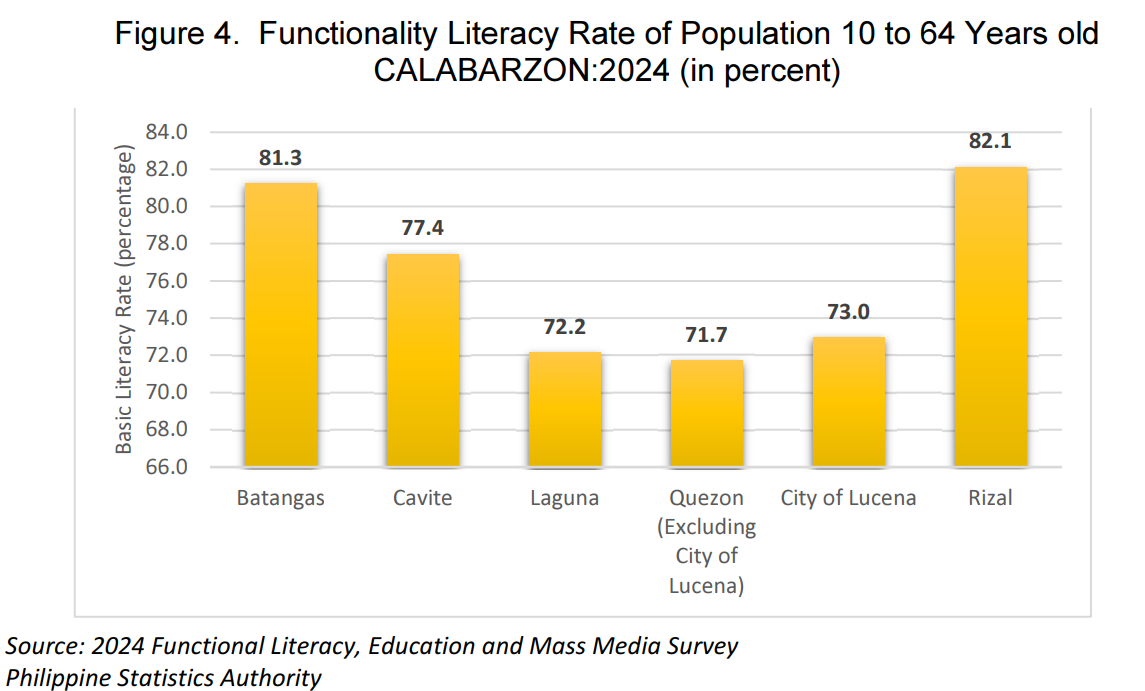
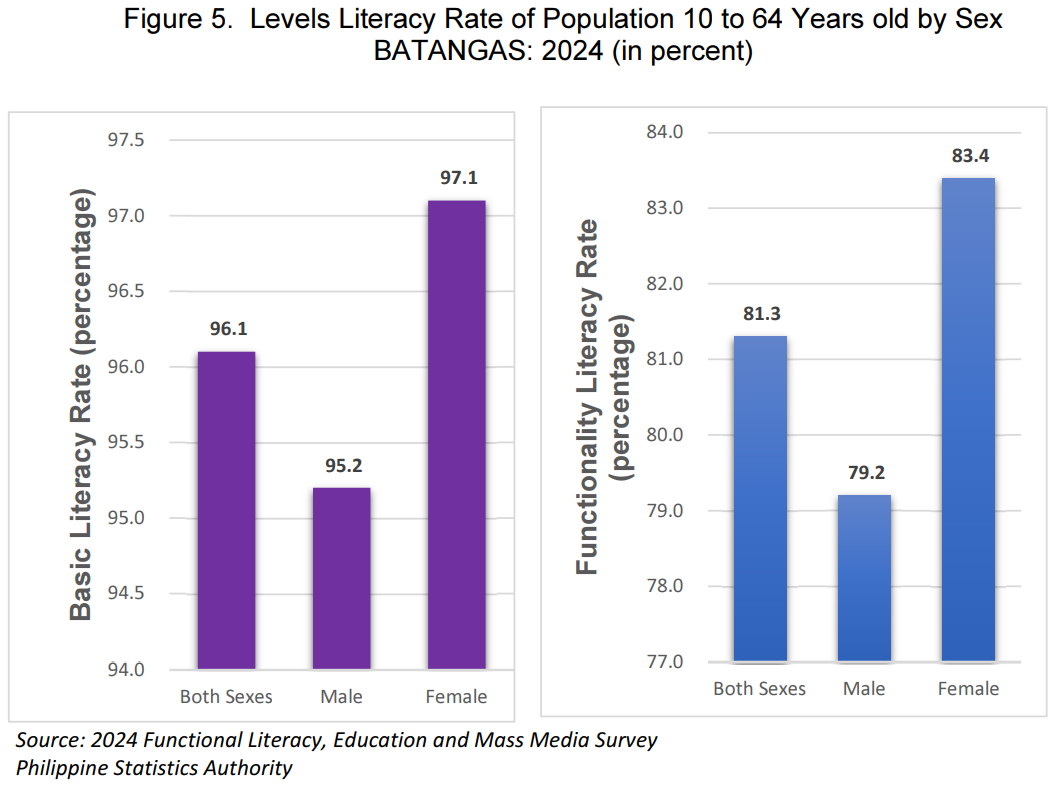
4. The gap between basic literacy and functional literacy was highest in males
Among individuals aged 10 to 64 years in Batangas, 96.1 percent had basic literacy, while only 81.3 percent had functional literacy. This means that although most individuals can read, write, and compute, a portion of them struggle with comprehension. This implies that for every eight (8) individuals who are basically literate, about two (2) may not have adequate functional literacy or comprehension skills.
The gap between basic and functional literacy was widest among males. Based on the data, males had a basic literacy rate of 95.2% and a functional literacy rate of only 79.2%, resulting in a gap of 16.0 percentage points. In contrast, females had a basic literacy rate of 97.1% and a functional literacy rate of 83.4%, a smaller gap of 13.7 percentage points.
This suggests that for every three (3) males who can read, write, and compute, approximately one (1) struggle with comprehension. (Figure 5)
5.Batangas ranks fifth in the highest functional literacy rate across all provinces
On functional literacy, Batangas, with 81.3 percent in 2024 placed fifth across all provinces nationwide. This means that out of 100 individuals 10 to 64 years old in the province, about 81 individuals can read, write, compute, and comprehend. In CALABARZON, Batangas placed second to Rizal (82.1%). It was followed by Cavite (77.4%), Laguna (72.2%) and Quezon (71.7%).
The Philippine Statistics Authority (PSA) has conducted the 2024 Functional Literacy, Education, and Mass Media Survey (FLEMMS), which aims to gather data as bases in determining the state of literacy in the country.
The 2024 FLEMMS adopted a revised operational definition and methodology for measuring basic and functional literacy as approved by the PSA Board through Resolution No. 13, Series of 2024.
The 2024 FLEMMS adopted a revised operational definition and methodology for measuring basic and functional literacy as approved by the PSA Board through Resolution No. 13, Series of 2024.
Basic literacy is defined as the ability of a person to read and write a simple message in any language or dialect with understanding, and to compute or perform basic mathematical operations.
Functional literacy is the ability of a person to read, write, compute and comprehend. In addition to the basic literacy skills, functional literacy includes higher level of comprehension skills, such as integrating two or more pieces of information and making inferences based on the given information.
Basic literacy rate is computed for individuals five (5) years old and over, while functional literacy rate is computed for individuals 10 to 64 years old.
